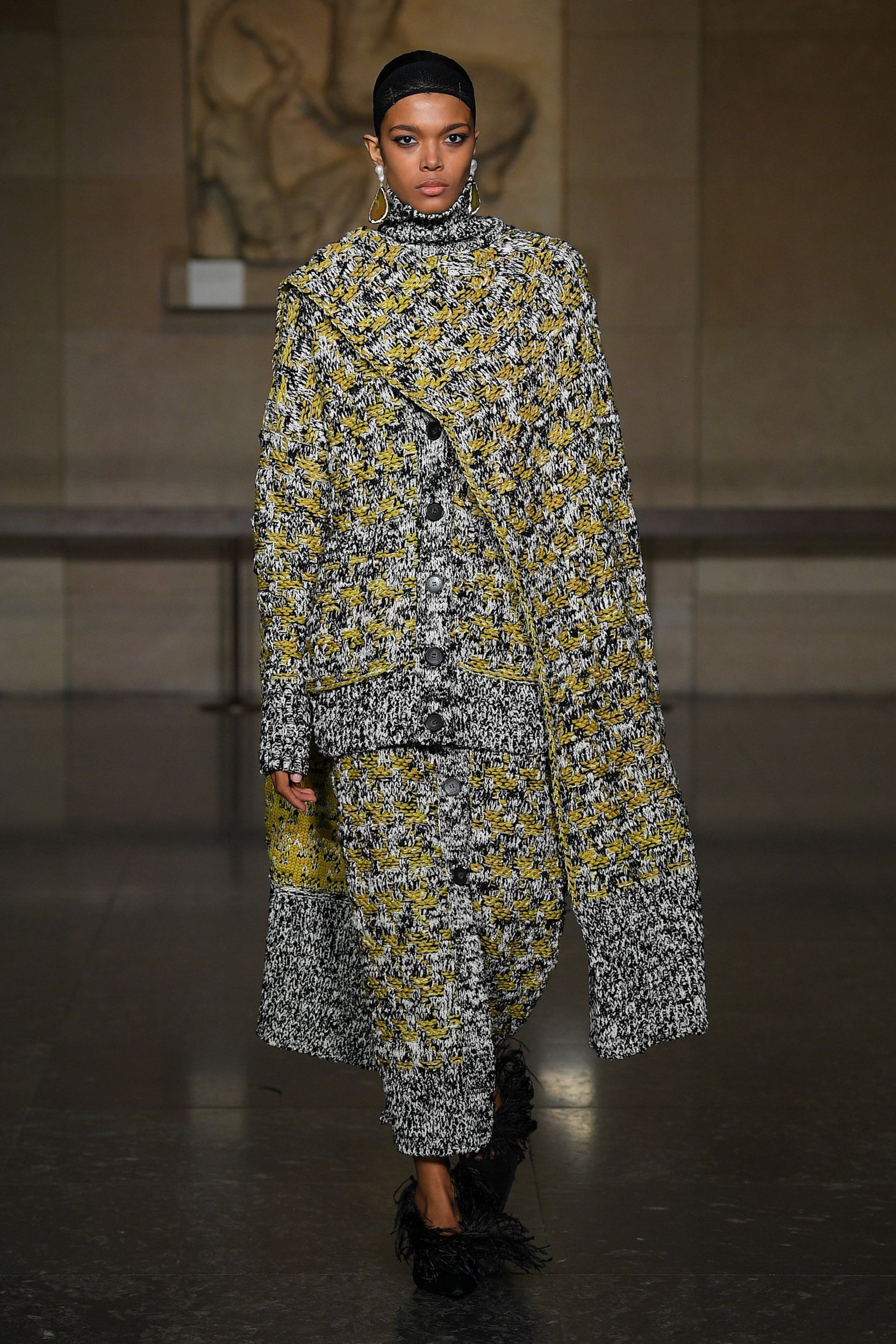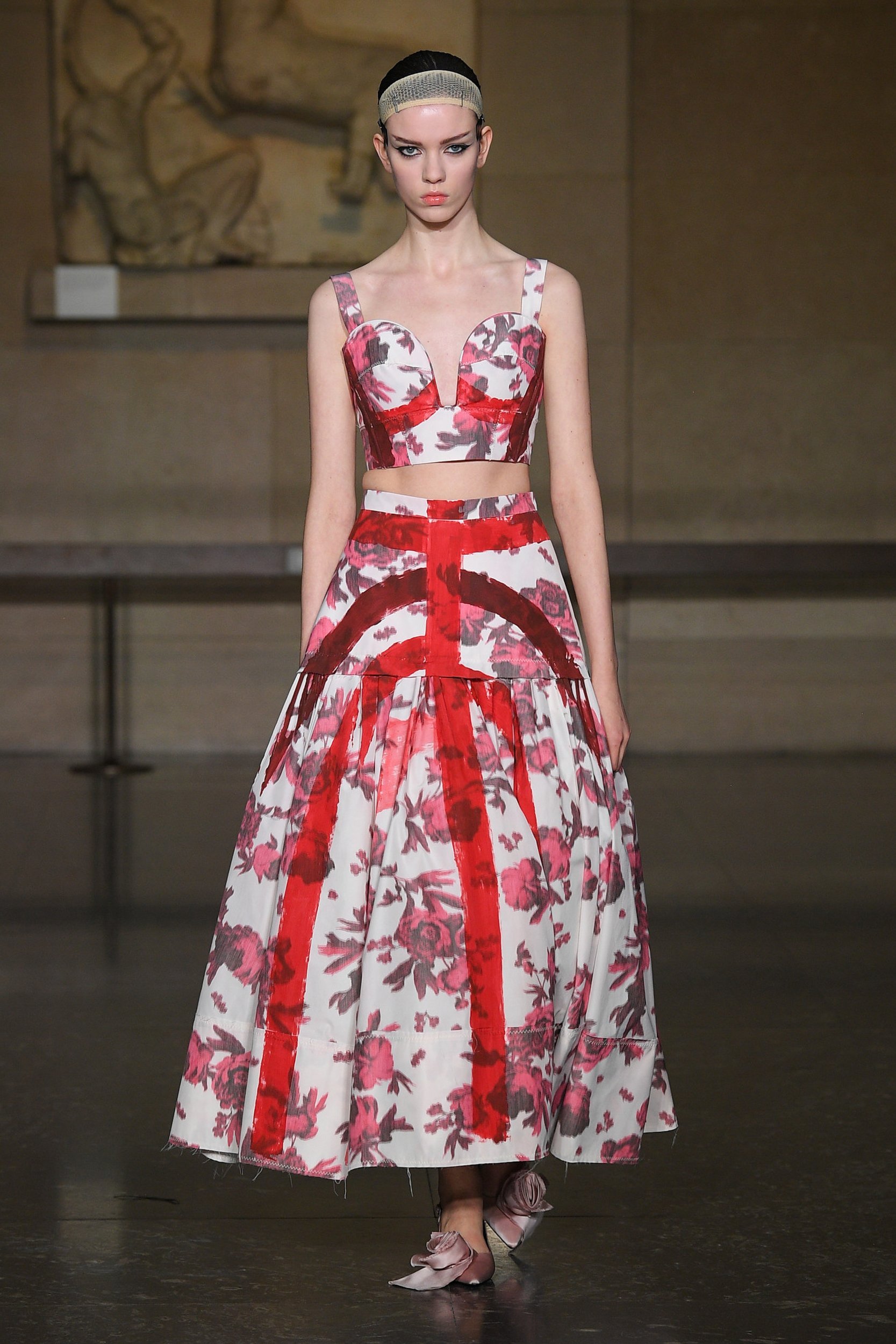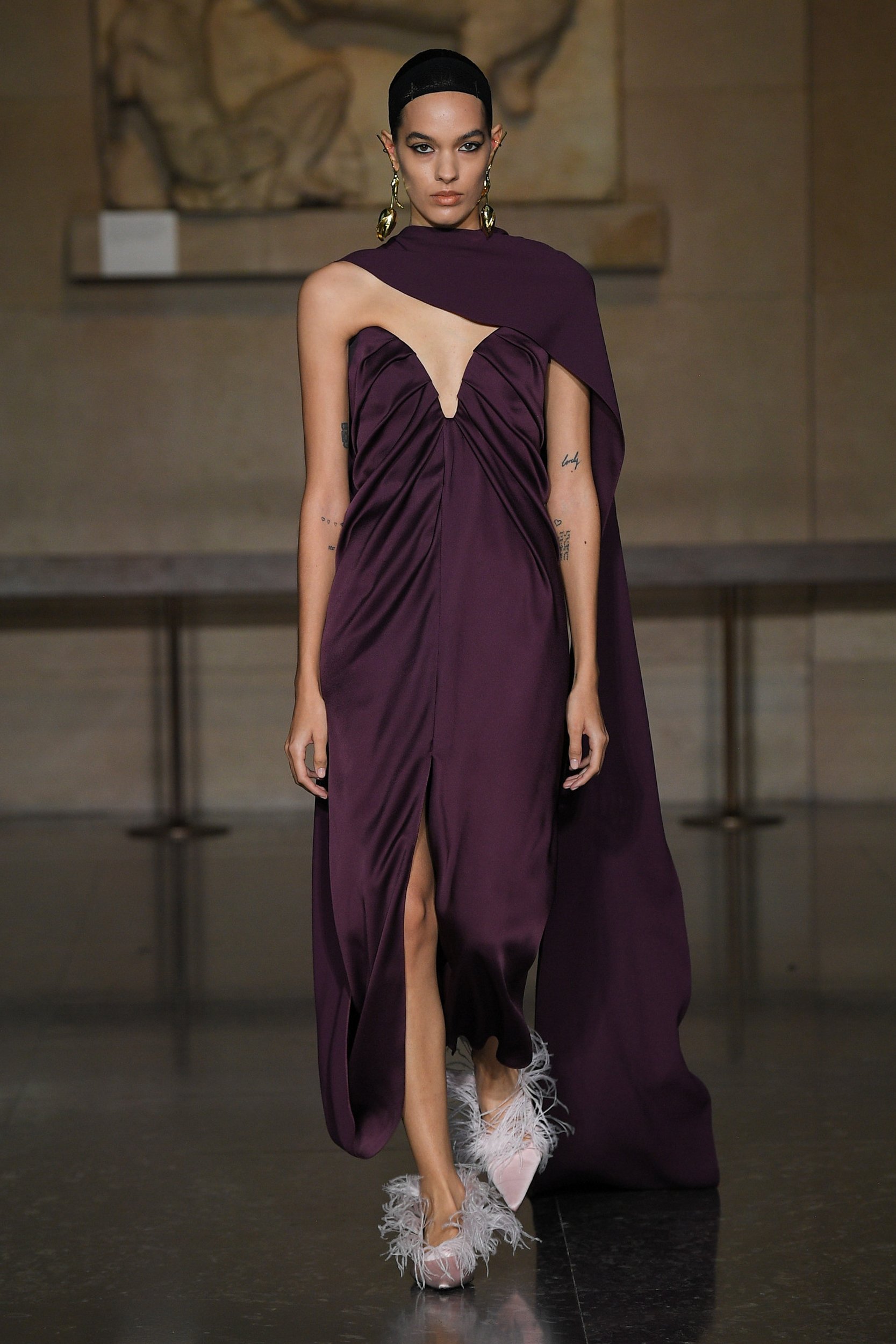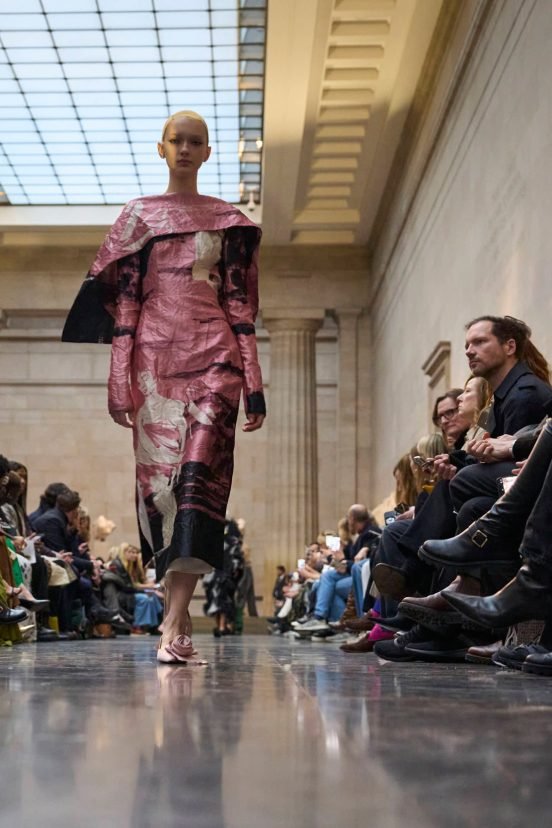Erdem Turns Greek Tragedy into Triumph
Review of Erdem Fall 2024 Fashion Show
By Angela Baidoo
THE COLLECTION
THE VIBE
THE THEME
Each season the storied histories of iconic powerful (in their own right) women live on in the collections of Erdem Moralioglu. The staging of the designers fall 2024 collection at the British Museum, in the room which houses the Elgin Marbles, was a deliberate one, as the collections muse was Maria Callas. American-born with her heritage deeply rooted in her Greek blood – quoted in 1957 as saying “…I may have been honoured around the world, but my blood is Greek, and this cannot be wiped out by anyone” – was a legendary soprano, who could also have been considered a pop idol in her heyday. Specifically referencing Callas’s transformative performance of the Greek tragedy Medea from 1953, the designer noted she didn’t just “play the role: she inhabited a persona”, and in todays collection it could be said it too is a reflection of the way in which the women who wear Erdem adopt a certain persona – adapting the way in which they stand or walk, as his dresses command women to take possession of their power.
In his work, the designer was fully inhabited by the spirit of the star, down to the way in which the hand gestures she was famous for – and which were evident backstage in the images of Callas either on the red carpet or at an event pinned to a mood board – were used to construct specific closures for robe and cape-like looks. On this Erdem said backstage to The Impression “She had these extraordinary draped dresses, or capes draped across her shoulders, and shes known for her hand gestures, and I thought there was something very beautiful in that.”
The control of 1950s-style silhouettes – fit and flare dresses, skirt suits, and cocoon coats – were also juxtaposed with Grecian draping, which added a sense of newness to today’s repertoire and were used as an exercise in contrasts. As both herringbone tailored dresses and swathes of fabric which draped to the floor on printed taffeta dresses were about the inclusion of softness. “[Its about] That contrast of something haphazard and draped with something structured and 50s, but I [also] like the idea that the fifties-ness is just a bra underneath” said Erdem Moralioglu.
The addition of boudoir style pyjama sets and robes (albeit highly decorative ones) were included not just as a category box-ticking exercise but they were a representation of Maria Callas’s life behind the curtain, capturing those intimate moments she would have spent in her dressing room with her performance make-up still fixed and her hair sans wig with the tape still visible (this also informed the hair and beauty for the show). Erdem wanted to explore the push and pull of the on-and-off stage persona which Callas inhabited. Speaking to The Impression backstage, the designer said “I was fascinated by that juxtaposition, the push and pull between person and persona, dressed, and undressed. The idea of the boudoir and that intimate moment of her stripping off her wig and the wig-tape being exposed and she’s either in her pyjamas or in a robe“
THE BUZZWORDS
Icons only, small gestures, modern myths
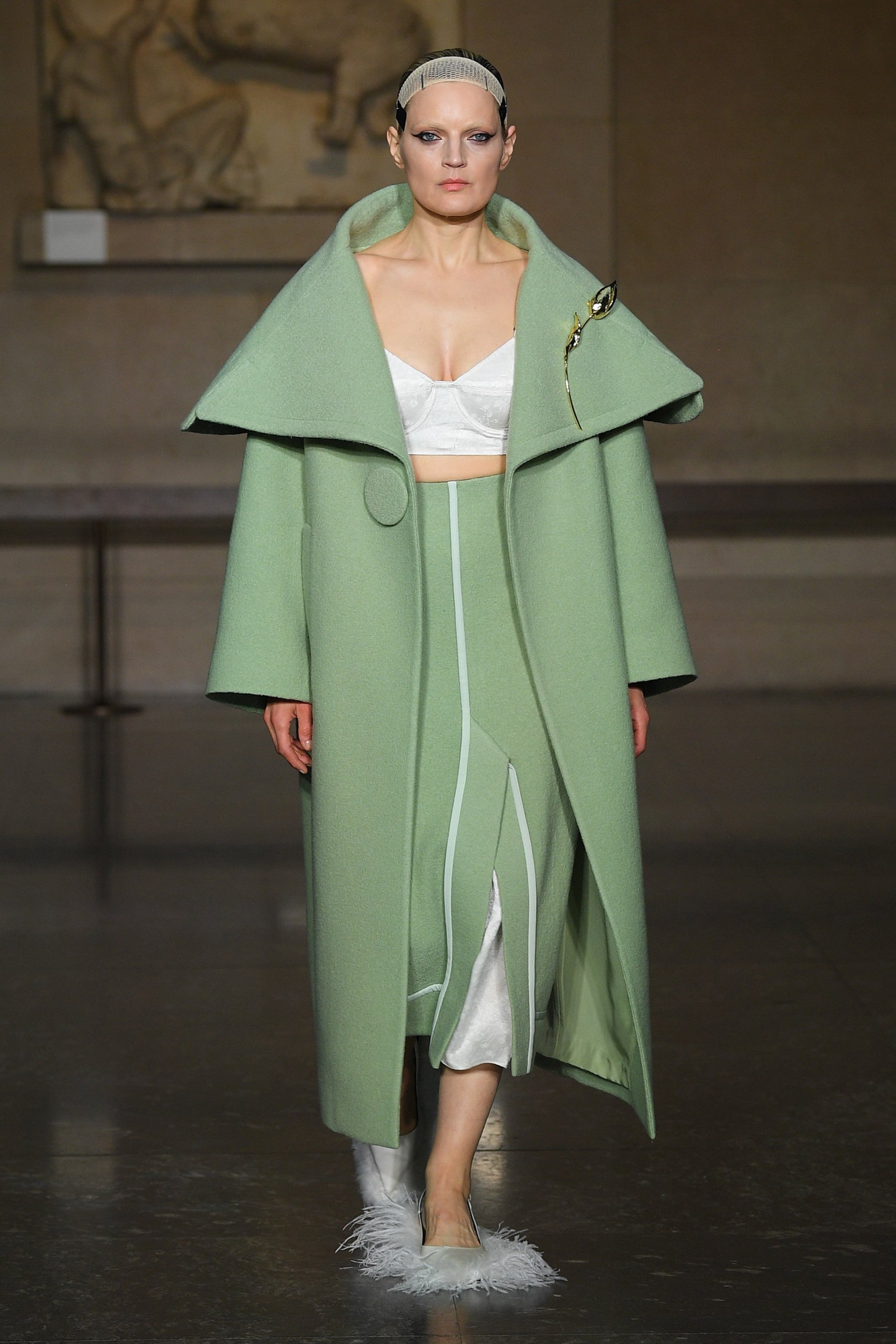
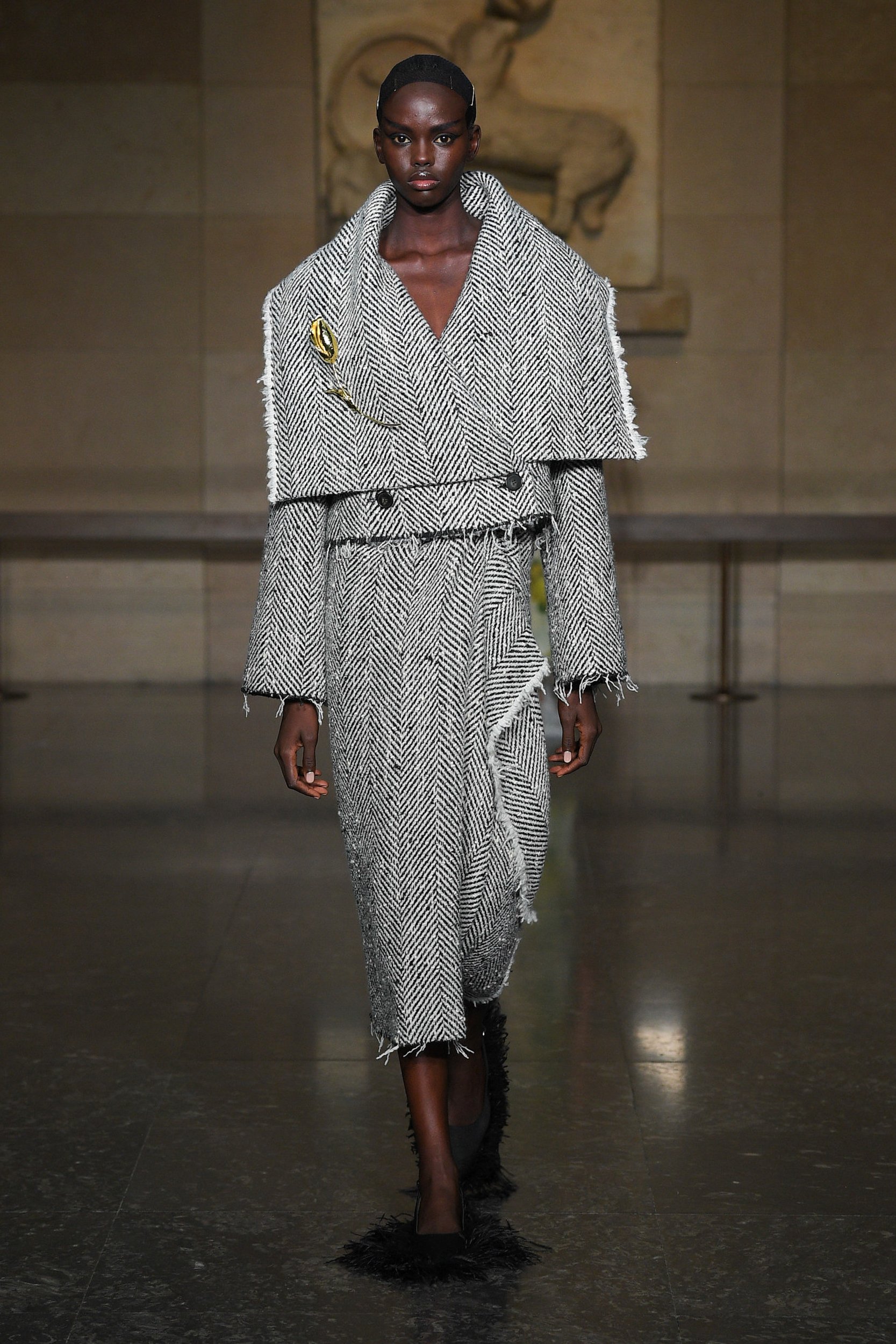
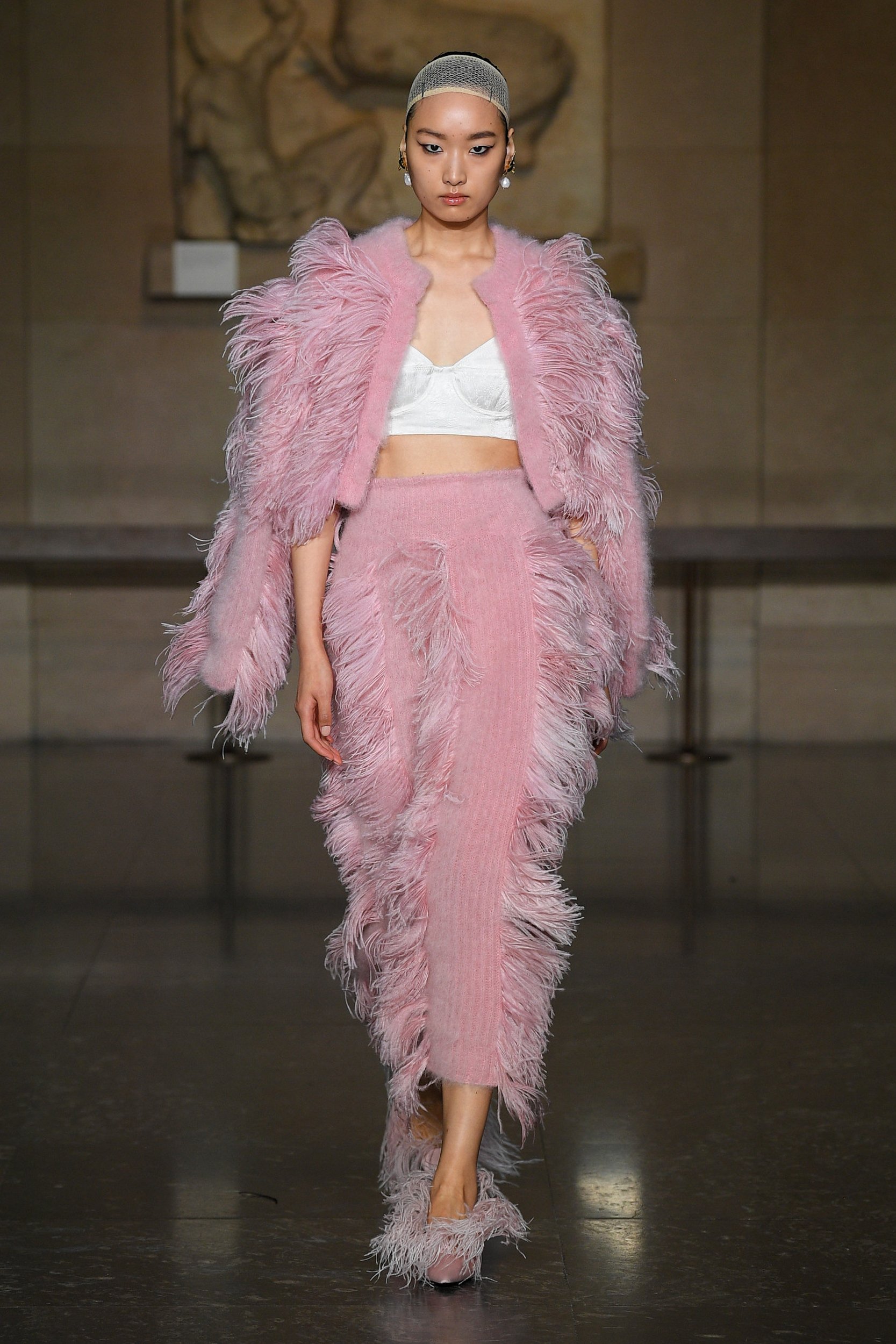
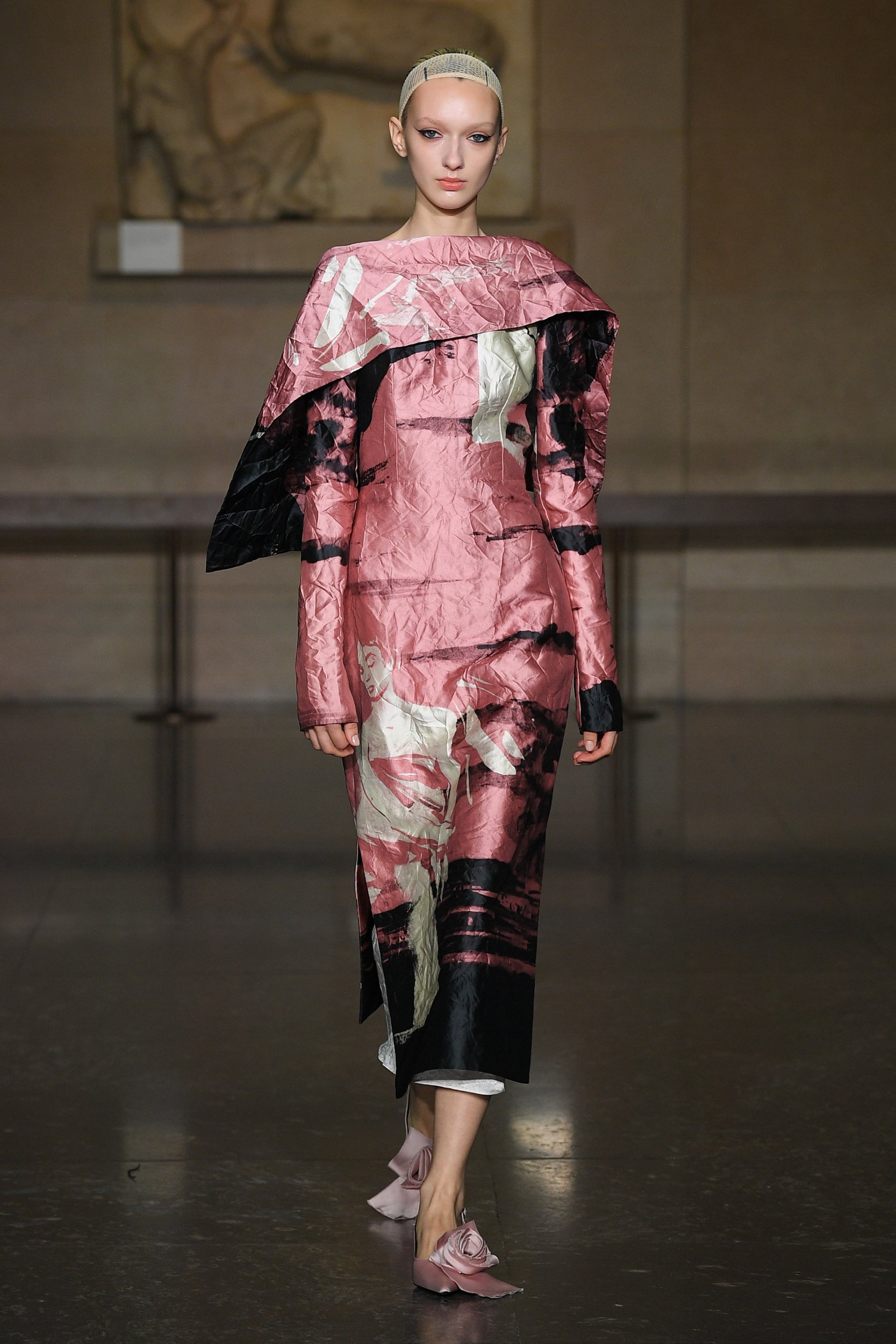

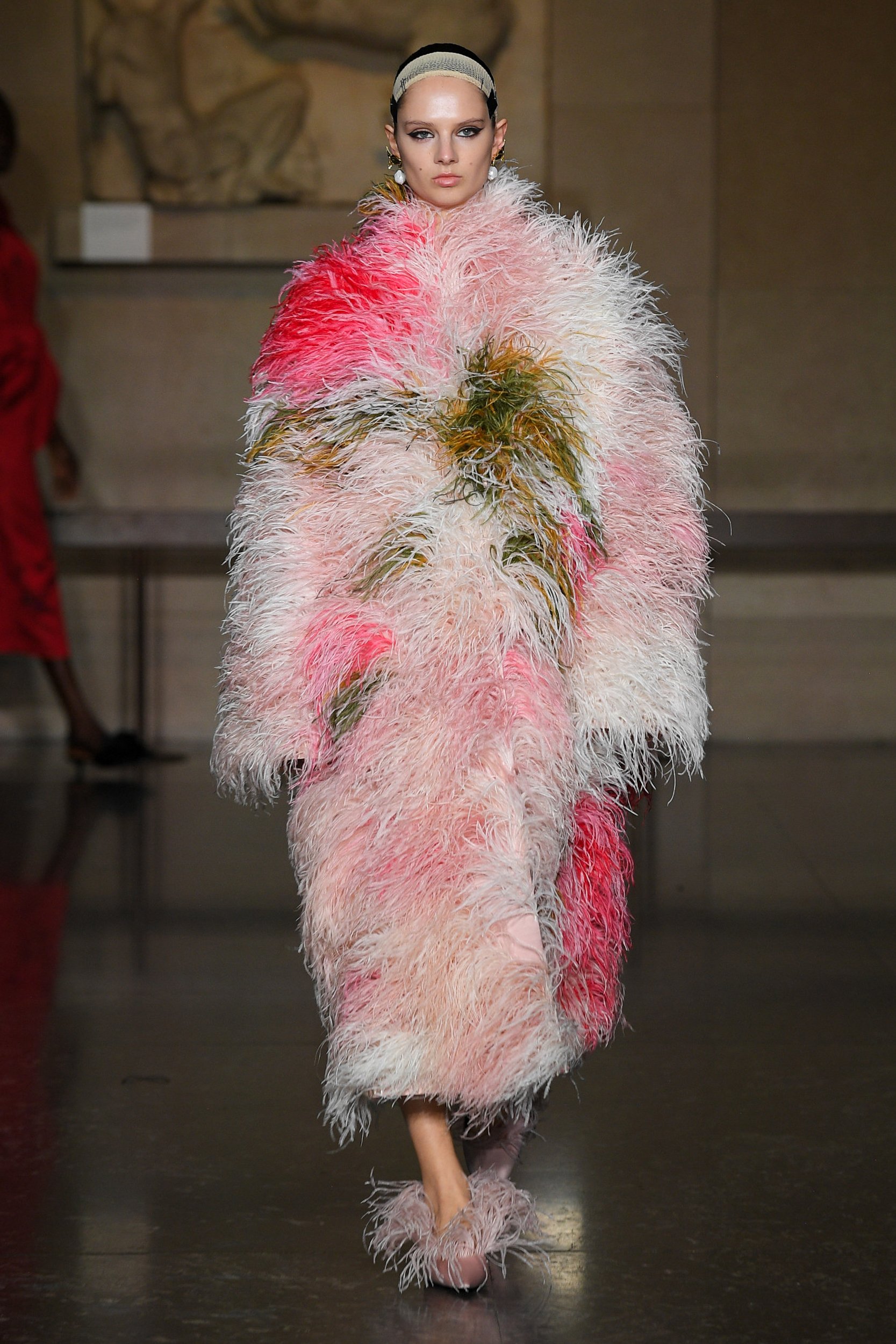
THE SHOWSTOPPER
Epitomising the gestures which the collections muse – Maria Callas – was known for, this cape coat represents the soprano’s life both onstage and in her boudoir.
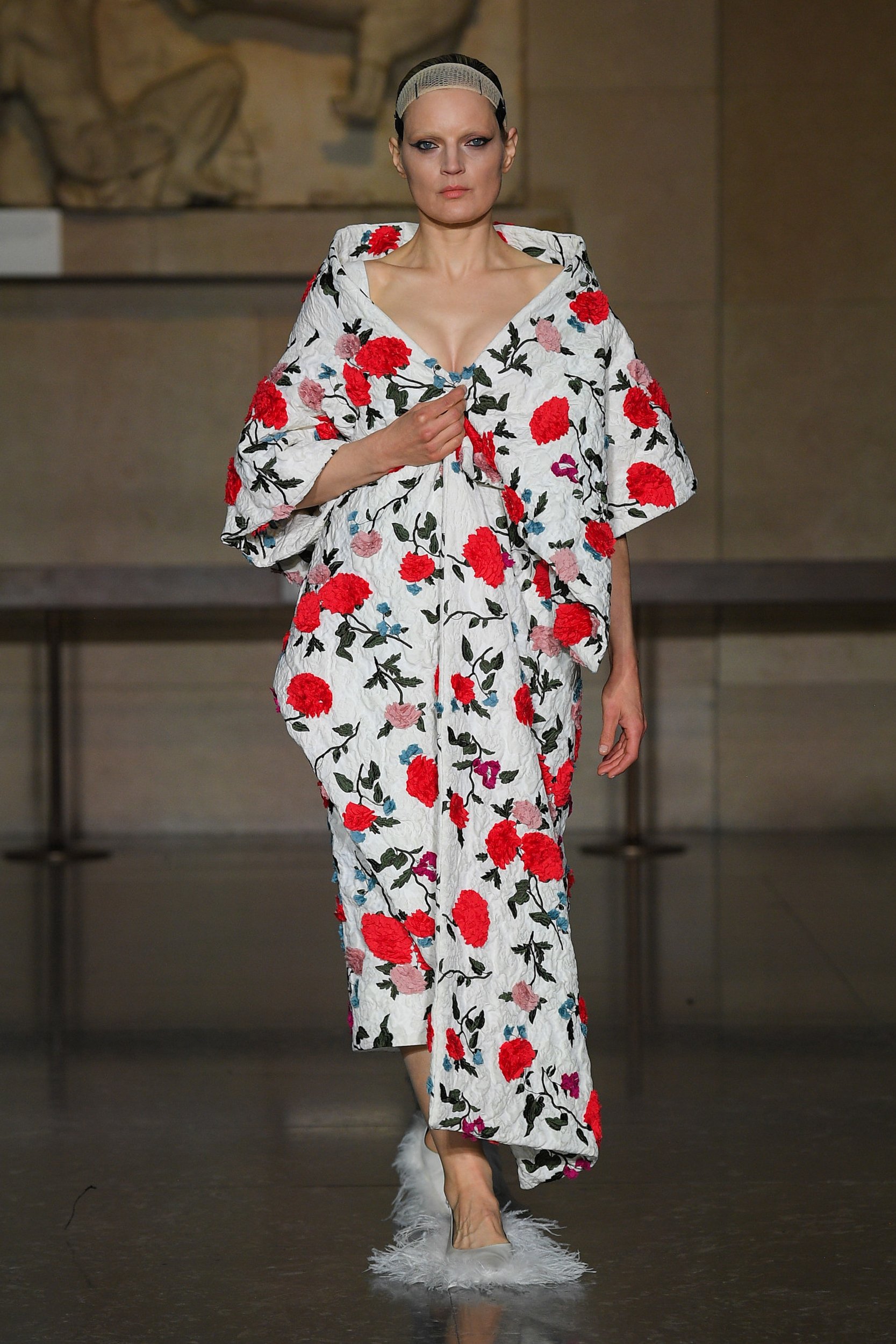
THE DIRECTION
THE QUOTE
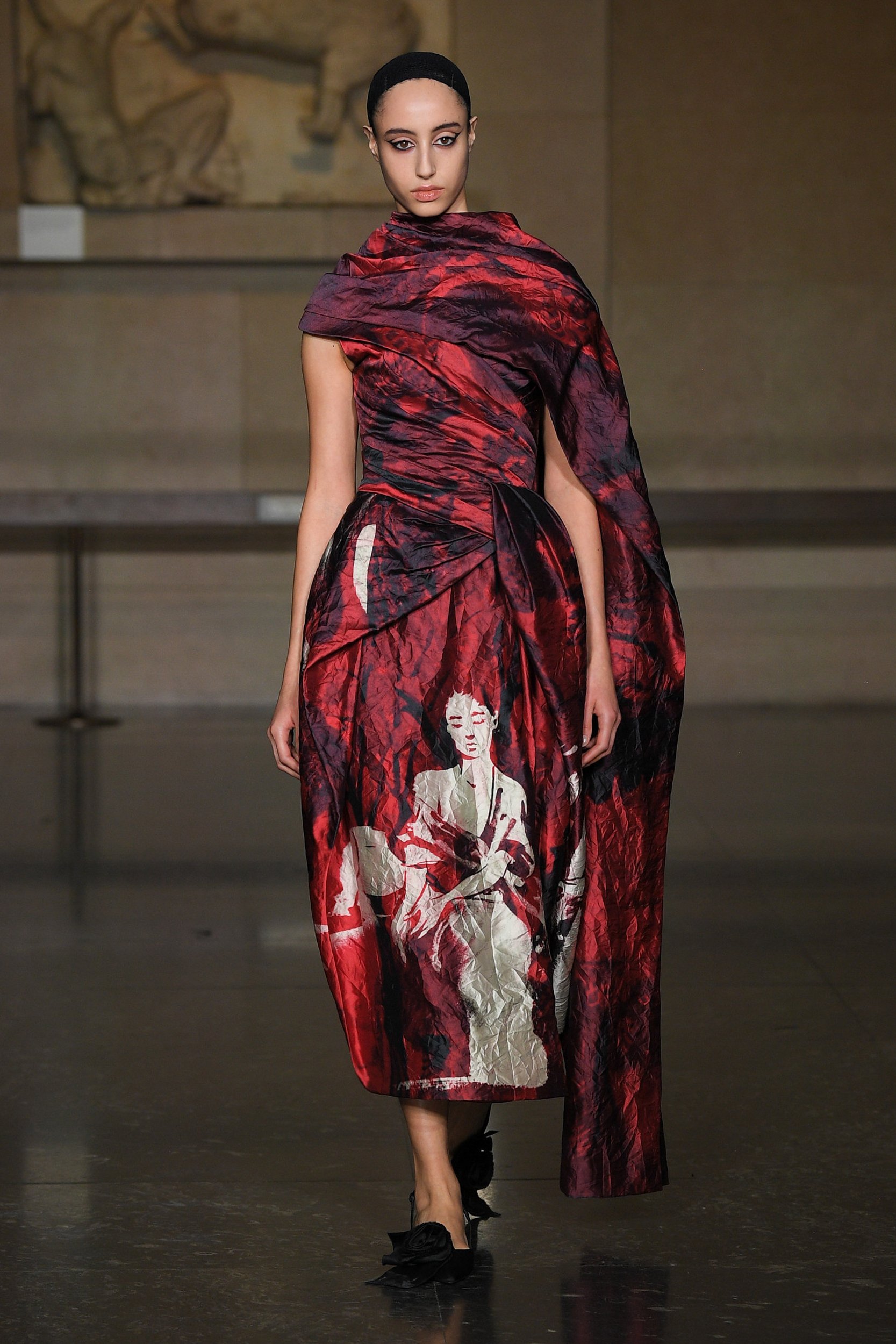
The production (of Medea) that she was in was so Pagan, it had these rough paint-strokes that they painted on the silhouettes to give the impression of Medea…and I love the gesture of making something perfectly in the studio and painting over it and ruining something, but actually making something that’s quite beautiful.
Erdem Moralioglu
THE WRAP UP
The American-born Greek soprano, Maria Callas, was the catalyst for a collection which enhanced Erdem’s feminine handwriting with the simplicity of a hand gesture informing fit, as well as probing into the false realities we create when there is a contrast between our personas in and out of the spotlight. In exploring these ideas this collection’s contrasts offer the Erdem woman new concepts to consider as they get dressed for the day. Who do they want to be? Do they want to be dressed or undressed, powerful or pious? As the designer challenges all to see the humanity in themselves.
